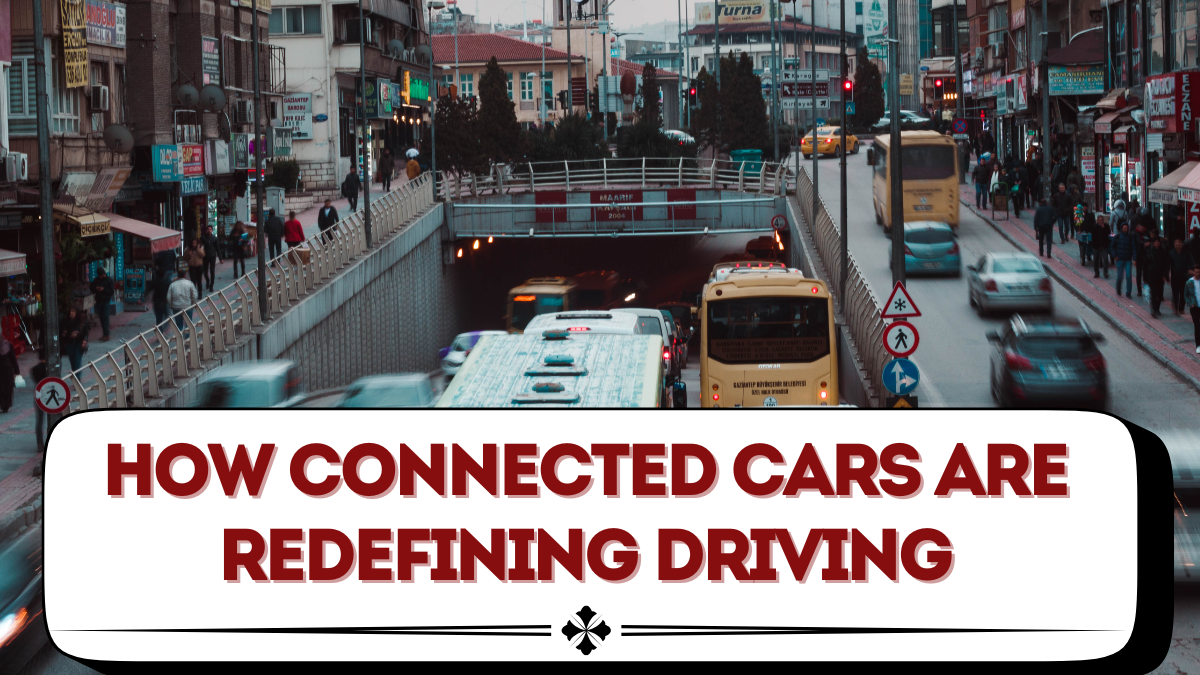The automobile industry is entering a new era where vehicles are no longer just machines for transport—they are connected cars that communicate, analyze, and adapt in real time. In 2025, advances in IoT (Internet of Things), artificial intelligence, and cloud integration are transforming cars into mobile smart devices.
From predictive maintenance to real-time navigation and AI-powered dashboards, connected vehicles are redefining how drivers interact with their cars and the world around them. This article explores the technologies, benefits, and challenges shaping the connected car revolution.

What Are Connected Cars?
Connected cars are vehicles equipped with internet access, sensors, and software that enable communication with other devices, infrastructure, and the cloud. These cars use IoT to gather data, provide services, and enhance safety.
Key features of connected cars include:
-
Real-time navigation with live traffic updates.
-
Vehicle-to-vehicle (V2V) and vehicle-to-infrastructure (V2I) communication.
-
Smart dashboards with integrated apps.
-
Predictive maintenance alerts.
-
Remote control via smartphone apps.
Technologies Powering Connected Cars in 2025
1. IoT Integration
IoT devices collect and transmit data, allowing cars to interact with smart homes, phones, and traffic systems.
2. 5G Connectivity
High-speed 5G networks enable ultra-low latency communication, essential for real-time updates and autonomous driving.
3. Artificial Intelligence (AI)
AI assists with predictive driving, safety monitoring, and personalized user experiences.
4. Cloud Computing
Connected cars use cloud servers for navigation, entertainment, and over-the-air (OTA) software updates.
5. Cybersecurity Solutions
With more connectivity comes higher risk, making cybersecurity a vital part of connected car systems.
Benefits of Connected Cars
-
Enhanced Safety – Cars share road hazard alerts and automatically adjust speeds.
-
Improved Navigation – Real-time traffic and route optimization.
-
Convenience – Remote start, climate control, and smart home integration.
-
Predictive Maintenance – Cars notify drivers of issues before they become critical.
-
Entertainment – Access to music, video, and communication apps directly from dashboards.
Connected Cars vs Traditional Cars
| Feature | Traditional Cars | Connected Cars 2025 |
|---|---|---|
| Communication | None | V2V, V2I, cloud-based |
| Navigation | Basic GPS | Real-time AI navigation |
| Maintenance | Manual checks | Predictive alerts |
| Entertainment | Radio/CD | Streaming apps, in-car WiFi |
| Safety | Reactive systems | Proactive AI + IoT alerts |
This comparison highlights how connected cars bring intelligence and convenience to the driving experience.
Challenges in Connected Car Adoption
-
Privacy Concerns – Cars collect sensitive user data that must be protected.
-
Cybersecurity Risks – Hacking could compromise safety and personal information.
-
Infrastructure Gaps – Many regions lack reliable 5G or IoT support.
-
High Costs – Connected car technology raises vehicle prices.
-
Learning Curve – Some drivers struggle with complex tech features.
Global Trends in Connected Cars
-
United States – Automakers integrating connected dashboards with AI assistants like Alexa and Google.
-
Europe – Focus on safety-driven V2X (vehicle-to-everything) technology.
-
China – Leading in smart EVs with connected services integrated into daily life.
-
India – Growing adoption of connected SUVs and smart infotainment systems.
Future of Connected Cars
The next wave of innovation will include:
-
6G-enabled vehicles with instant cloud response.
-
AR dashboards projecting navigation directly on windshields.
-
Autonomous vehicle integration with connected car systems.
-
Energy optimization through smart grid interactions.
-
Car-as-a-service platforms allowing subscriptions for connected features.
FAQs
What is the biggest benefit of connected cars?
Enhanced safety and real-time navigation are among the top benefits, making driving more efficient and secure.
Do connected cars require internet?
Yes, they rely on 4G/5G or satellite connectivity for most features, though basic functions still work offline.
Are connected cars safe from hacking?
Cybersecurity has improved, but risks remain. Automakers are investing heavily in stronger protections.
Can older cars be converted into connected cars?
Yes, aftermarket devices can add limited connectivity features like GPS tracking and WiFi, but full integration requires new models.
Will connected cars work everywhere?
In areas with strong 5G or IoT infrastructure, yes. Rural or remote areas may still face connectivity issues.
Conclusion
The rise of connected cars in 2025 is redefining the driving experience. By combining IoT, AI, and high-speed connectivity, these vehicles offer safer, smarter, and more convenient mobility. While challenges like cybersecurity and infrastructure gaps remain, the benefits of predictive maintenance, real-time communication, and enhanced driver experiences make connected cars a cornerstone of the automotive industry’s future.
Click here to know more.
